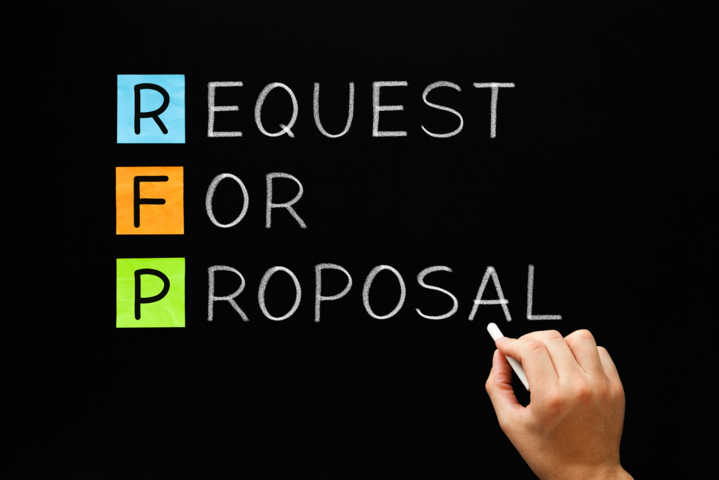A great product or service can only go so far if it’s not presented in the right way. That’s where a good sales pitch comes in. The art of the pitch is an essential skill for most businesses, whether it’s trying to close a deal with a potential client or securing funding from investors. A well-crafted sales pitch can convey the value of your product or service, persuade investors to fund your project, and ultimately increase your revenue.
However, not all sales pitches are created equal. A poorly constructed pitch can fail to capture the attention of your audience and leave you empty-handed. That’s why understanding the essential elements that make up a winning sales pitch is critical.
In this blog post, we will provide a brief overview of the key elements that make a winning sales pitch. We’ll explain why clear messaging, audience analysis, storytelling techniques, and a strong slide deck are essential elements to captivating your audience’s attention. Additionally, we’ll provide tips and advice on how to execute each of these elements effectively to create a highly effective sales presentation that can help you succeed in any business endeavor.
Whether you’re an entrepreneur, a salesperson, or a small business owner, mastering the art of the pitch can be the key to your success. So let’s dive in and discover what it takes to create a winning sales presentation.

Clear Messaging Makes All The Difference
Clear messaging is one of the essential elements of crafting a successful sales pitch. It’s the foundation upon which the entire pitch is built. A clear message is what allows your audience to quickly understand what you’re offering and why it’s valuable to them. Confusing or vague messaging can leave your audience unsure about your product or service, leading to missed opportunities.
So what can you do to ensure that your message is clear and concise? Here are some tips:
Know Your Audience
Before you start crafting your message, it’s crucial to understand who you’re speaking to. What are their interests, needs, and pain points? Tailoring your message to your audience’s specific needs can help you create a connection that resonates with them.
Keep it Simple
Your message should be easy to understand and not bogged down by industry-specific jargon. Avoid using technical terms that your audience may not understand. Instead, explain your product or service using simple and straightforward language.
Emphasize the Benefits
Your messaging should focus on the benefits of your product or service—not just its features. Highlighting the value that you’re offering to your audience is more likely to capture their attention than merely describing the specifics.
Use Storytelling
Stories can be an excellent way to get your message across, conveying complex ideas in a way that’s easy to understand. If you can use stories to explain your product or service, your audience is more likely to remember what you’ve shared with them.
What Does Successful Messaging Look Like?
Successful messaging can also be seen in various sales pitches. For example, Apple has become known for its simplicity. They focus on emphasizing the benefits of their product rather than getting lost in complex features. Their tagline for the iPhone—”This changes everything”—epitomizes the simplicity of their message.
Another great example is Dollar Shave Club’s famous one-minute promotional video. The video is a perfect example of how to present a clear message through storytelling. In the video, the founder uses humor to highlight the shortcomings of buying expensive razors in traditional stores. He shows the value of their service of providing razors for just a dollar a month. The message is clear, concise, and memorable.
Focus On Analyzing Your Audience
Understanding your audience is essential for delivering a successful sales pitch. Conducting audience analysis can help you tailor your message and approach to suit the specific needs and interests of the people you’re presenting to. By doing this, you can increase your chances of capturing your audience’s attention and successfully closing the deal.
So why is audience analysis crucial? Firstly, it helps you identify the unique characteristics of the audience you’re presenting to, such as their demographics, job title, and company ideals. By doing this, you can develop insights into what motivates that particular audience, what they’re looking for in a product or service, and how your product or service addresses their needs.
Here are some tips and methods for conducting audience analysis:
- Analyze Company/Industry Information: Conduct research on the company or industry your audience belongs to. This information can provide valuable insight into their values, goals, and challenges.
- Observe Social Media Channels: Social media can provide valuable information on your audience’s interests and behavior. Check out their social media profiles to get an idea of what they’re interested in and what they’re saying about your industry.
- Ask Questions: Ask open-ended questions to your audience before beginning the pitch. This could give you more insight into their company’s specific values, what they’re looking for, and how they need their challenges to be addressed.
Successful companies have used audience analysis to their advantage. For example, when Ford was developing its car, the Mustang, it conducted extensive audience analysis. They gathered information on the younger generation at the time, who were looking for cars with edgy styling, increased size, and a high-performance motor. This gave Ford the direction it needed to position the new Mustang in such a way that resonated with its target audience.
Another company that excelled in audience analysis is Tesla. The automaker targets early adopters that crave something unique and different from traditional cars. They analyze the luxury segment to determine what the luxury buyers are purchasing, from what shows they are watching on TV to what music they started playing out loud.
Use Storytelling Techniques
Storytelling is an incredibly effective way to make your sales pitch more memorable and impactful. By using storytelling techniques, you can create a narrative that engages your audience, captures their attention, and helps them remember your message.
So why is storytelling effective in sales pitches? For starters, stories are memorable. People are much more likely to remember a story than they are to remember facts and figures. Stories can also help create an emotional connection between you and your audience, which can lead to increased trust and interest. Additionally, stories can be used to illustrate the benefits of your product or service in a way that’s easy to understand.
Here are some tips on how to use storytelling effectively in your sales pitch:
- Show, Don’t Tell: Use vivid language and descriptive details to help your audience visualize the story you’re telling. You want to create an experience for them rather than merely telling them what happened.
- Make Your Audience the Hero: When telling a story, you want your audience to see themselves as the hero. That means positioning your product or service as the tool that helps them achieve their goals.
- Use Emotion: Stories that evoke emotion are more likely to resonate with your audience. Try to include aspects of your story that can make your audience feel something—whether it’s joy, empathy, or excitement.
Several companies have used storytelling to their advantage in their sales pitches. One notable example is Patagonia’s ‘The Fight for Public Lands’ campaign. The company utilized storytelling to convey its message of fighting to protect national parks, establishing itself as a brand for people who share the same values. The campaign showed footage from the different national parks while narrating stories from the people who visited them.
Build Your Visuals And Slide Decks
Visuals and slide decks are essential elements to a winning sales pitch. A powerful and compelling visual presentation can help to reinforce the message you’re presenting to your audience. The way you present information is just as important as the information itself. Using a strong visual and slide deck can help you communicate your message more effectively and leave a lasting impression on your audience.
Here are some tips on how to create effective visuals and slide decks:
- Use High-Quality Images: Using low-resolution and blurry images can be a distraction. Opt for high-quality images that add value or evoke desired emotions.
- Make it Visually Intuitive: Ensure your design is visually intuitive to your audience. Your design should be simple and clear enough to be quickly understood by all members in attendance.
- Use Animation Wisely: Animation can be a useful tool when used correctly. Ensure animations are impactful, serve the purpose of making the key information more memorable, and do not detract from the presentation.
Successful visuals and slide decks have been demonstrated through companies such as Apple. They are well known for creating visually intuitive slides that are crisp and concise, engaging hundreds of thousands of viewers at their product launch events.
Another successful example is Airbnb’s pitch deck, which was created in 2008 to secure a $150,000 investment. The deck was so impressive that it helped to onboard 600 hosts for the business in a single weekend, leading to Airbnb becoming a worldwide business with now over 4 million listings. The deck had a simple and elegant layout with plenty of visuals and relevant data to support the company’s value proposition.
FAQs
What is a sales pitch?
A sales pitch is a presentation or conversation designed to persuade an audience to purchase a product or service. It involves using persuasive language and tactics to explain the value of your offering and how it can benefit potential customers.
How do you make a successful sales pitch?
Successful sales pitches involve preparation, research, and storytelling. Before you make a pitch, it’s important to do your homework on the customer and their needs. You should also focus on crafting a compelling story that conveys the value of your product or service through vivid language and descriptive details. Finally, using visuals and slide decks can help reinforce your message to your audience.
What are some examples of successful sales pitches?
Some notable examples of successful sales pitches include Patagonia’s ‘The Fight for Public Lands’ campaign and Apple’s product launch events. Airbnb’s pitch deck, which was created in 2008 to secure a $150,000 investment also stands out as an impressive example. All these sales pitches utilized storytelling, visuals and slide decks to effectively communicate their message.
Wrapping It Up
When it comes to making a successful sales pitch, preparation, and storytelling are key. It’s important to do your research on the customer and their needs before you make a pitch. Additionally, having effective visuals and slide deck can be invaluable when it comes to reinforcing your message to your audience. By leveraging these elements, you can ensure that your sales pitch is persuasive and leaves a lasting impression.
If you’re looking for your next career move, contact us today at Sales Recruiters Denver, or browse through open jobs to find the position of your dreams! Sales Recruiters Denver is the top sales recruiting firm in Denver, Colorado. We specialize in placing top sales talent into great companies nationwide. If you are looking for a new sales opportunity, let’s connect today.

